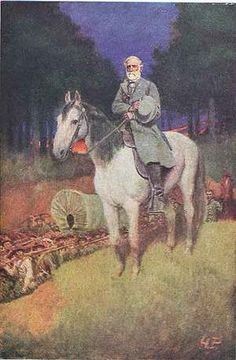The boys, their studies done, eagerly opened the missive waiting for them. It had become rather evident to the other students that Fredrick Jameson received more mail than any other lad at the school...
Dearest Fred,
As promised, here follows the history of the February 6th battle for Fort Henry.
Confederate Brigadier General Tilghman had a problem on his hands. He had a force of Yankee infantry, 15,000 strong marching south from where landed the previous two days, three miles north. Out on the river, he was faced by small fleet of seven boats: four of which were ironclads. One of the seven was somewhat crippled from a Confederate shell squarely put into her on a preceding day.
But that wasn't all. The Tennessee River was steadily rising. In fact, the majority of the guns of Fort Henry were under water. By two o'clock in the afternoon, he had but four functioning guns, as the rest had either exploded or been submerged beyond usefulness.
Thus is was on the night of the 5th, General Tilghman had sent the majority of his command out of the fort. He returned himself and with a small garrison, set his face to defend Fort Henry for as long as was possible. He had requested of his men one single hour of battle, in order to allow the rest of the men to put more distance between themselves and the invaders.
The Yankee's did not begin the advance until around 11 the morning of the 6th. The Federal infantry started it's slow, slogging march. However, out of the river, Commodore Andrew Foote refrained from engaging the Confederates until roughly noon.
When he did, the battle got hot--for both sides. The ship-bound besieger's lost one of their ships, the USS Essex and had another damaged by the accurate fire of the defender's batteries.
As it transpired, the Federal infantry never had an opportunity to join in the fray. By the time they reached the fort, the fighting was over. The defender's, after two hours (an hour more than the general requested, you will recall) of steady artillery barrage, were left with four cannon manned by skeleton crews (the general himself manning a gun); they struck their colors and surrendered.
*click on the image* The above shows the names of the officers captured at Fort Henry. (The date seems to say July--but it has to be February.)
I have sent a couple of military reports. This first one is rather succinct.
This second one is by Commodore Foote and goes into a little more detail:
Even General Tilghman was afforded the opportunity to write an official report:
Your affectionate,
Grandfather







 RSS Feed
RSS Feed

